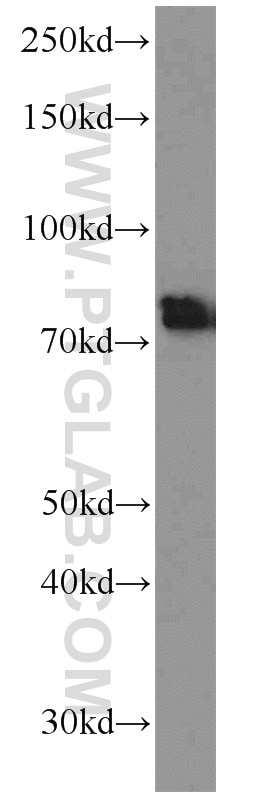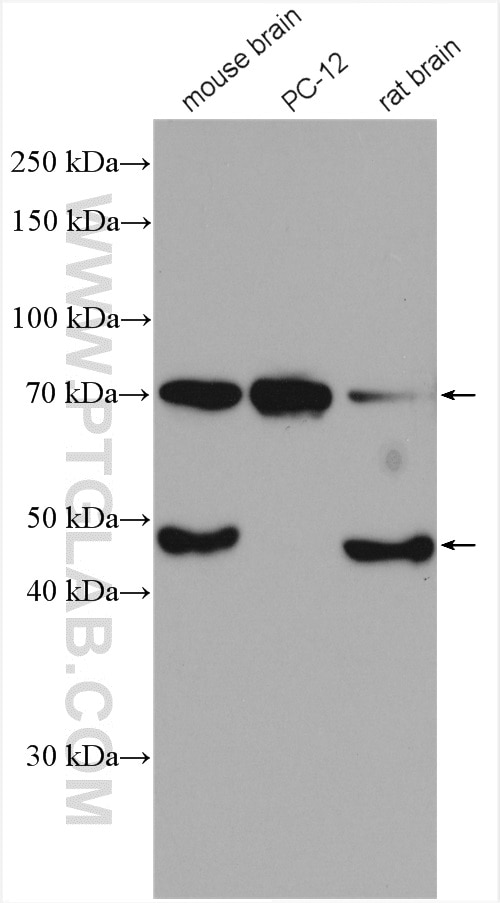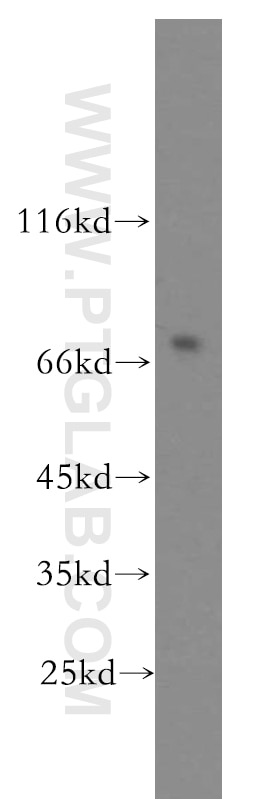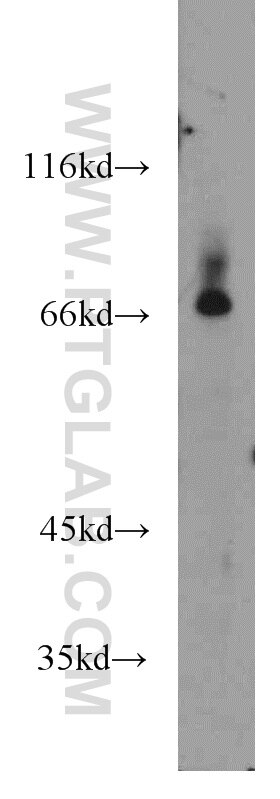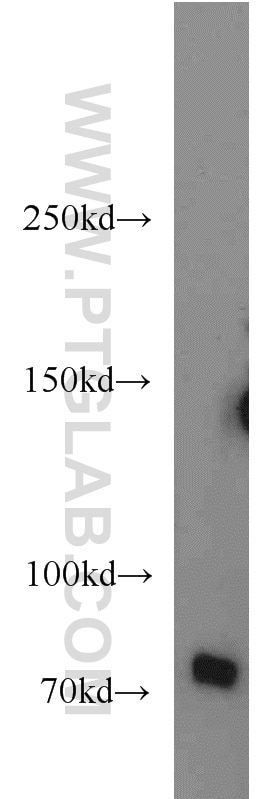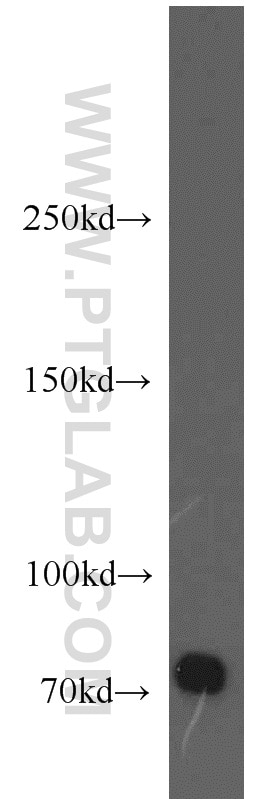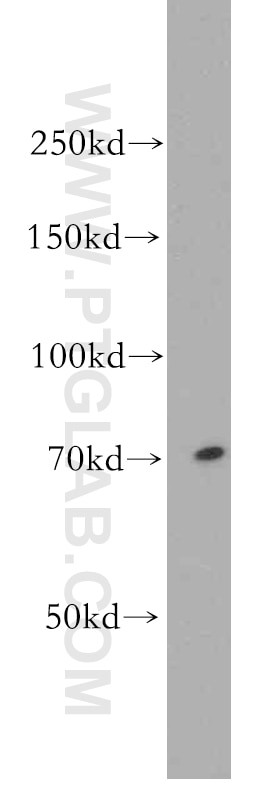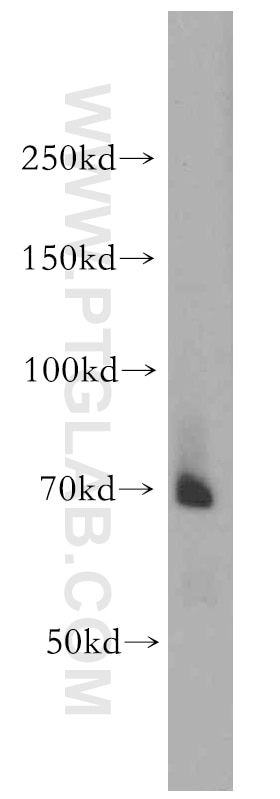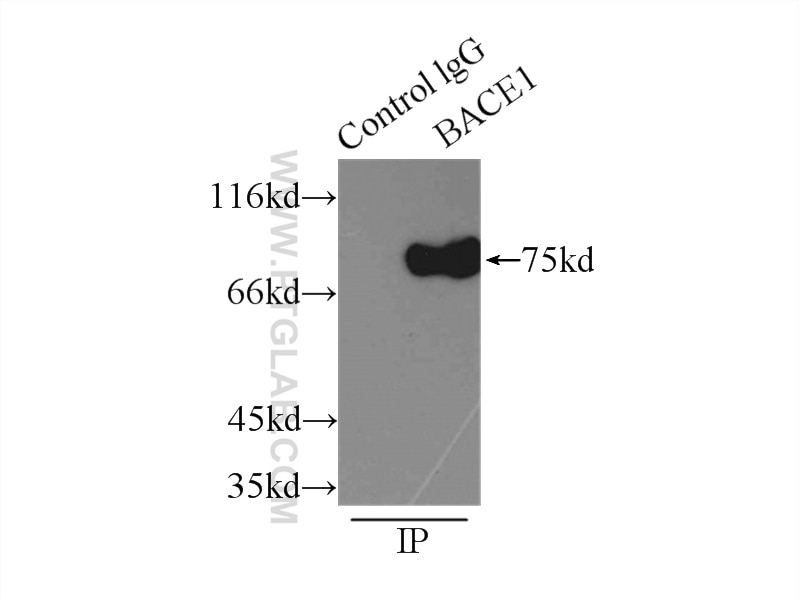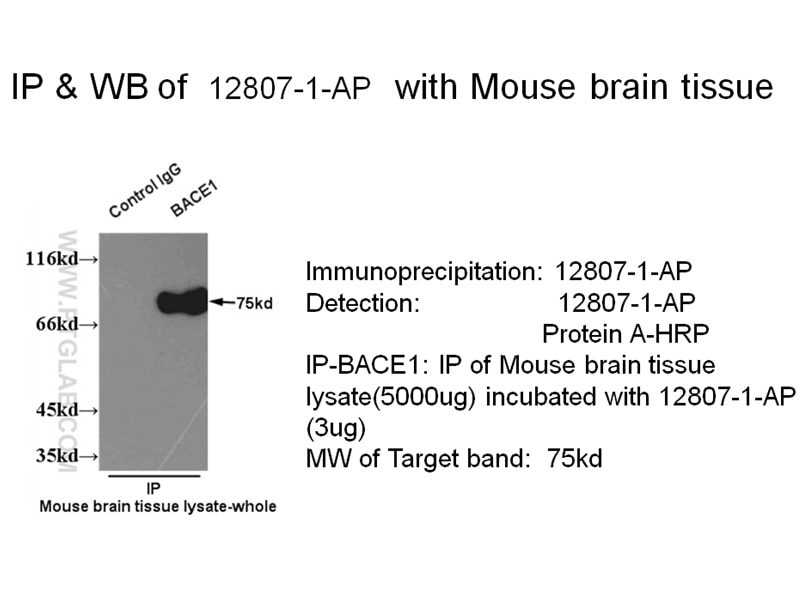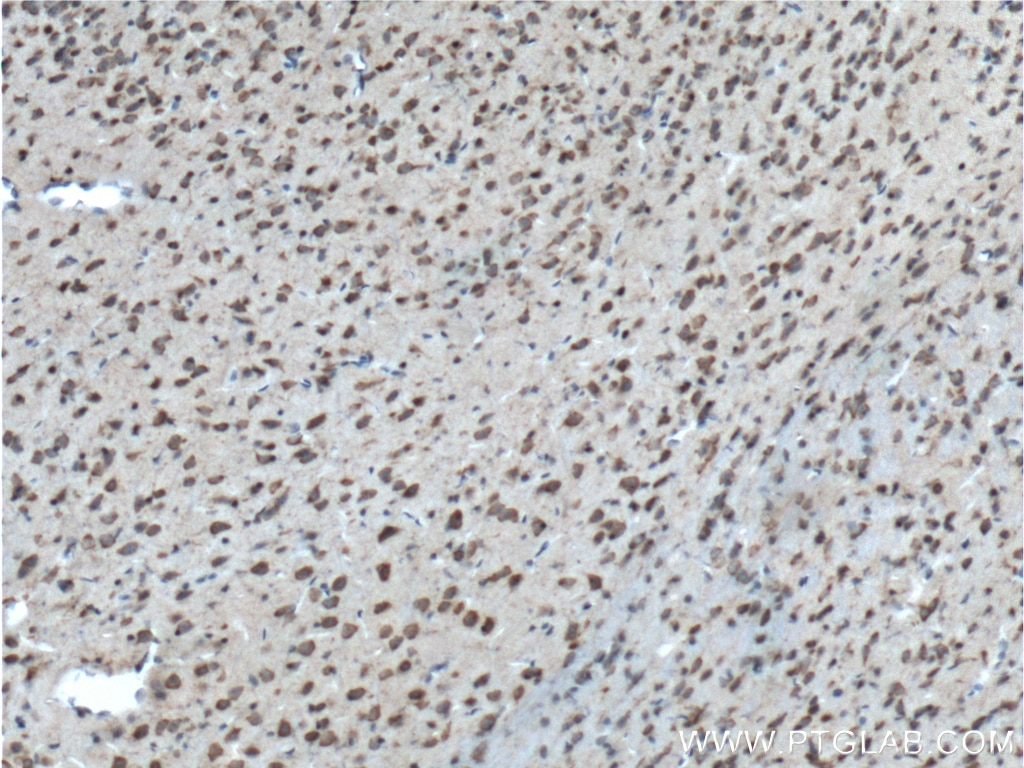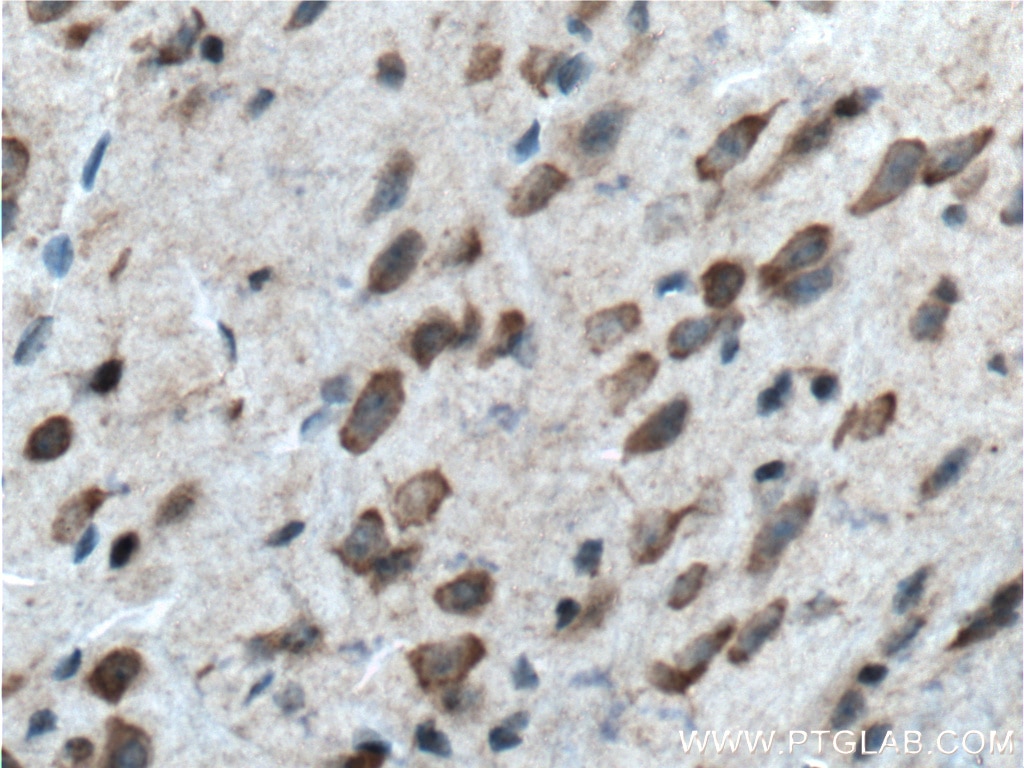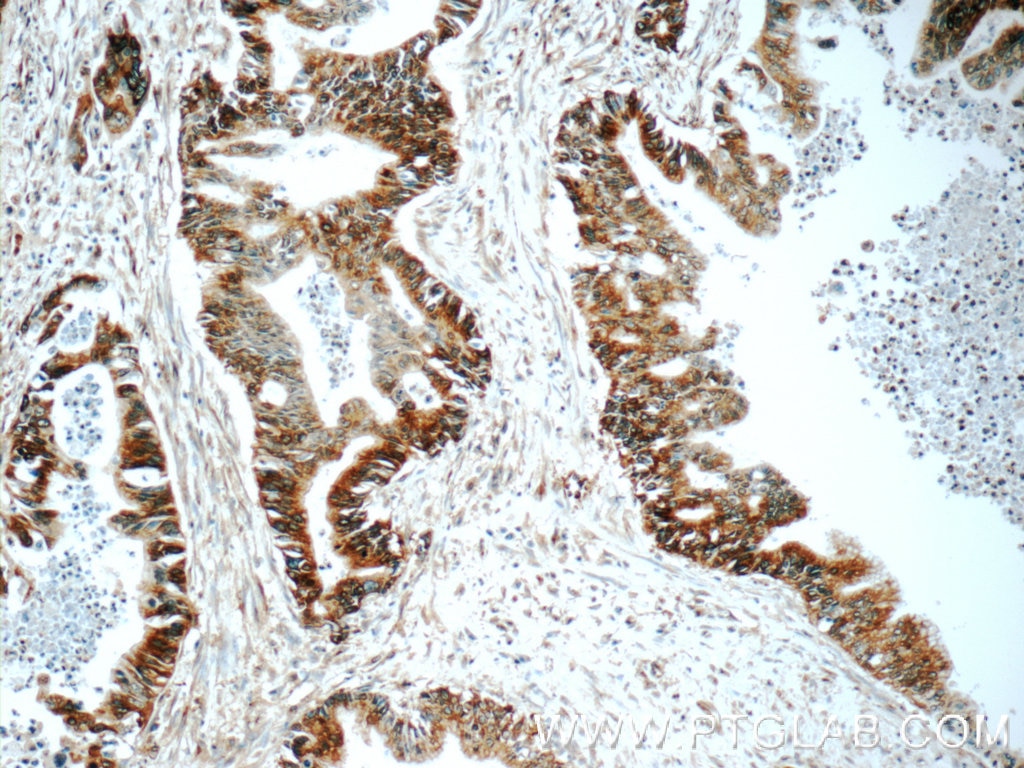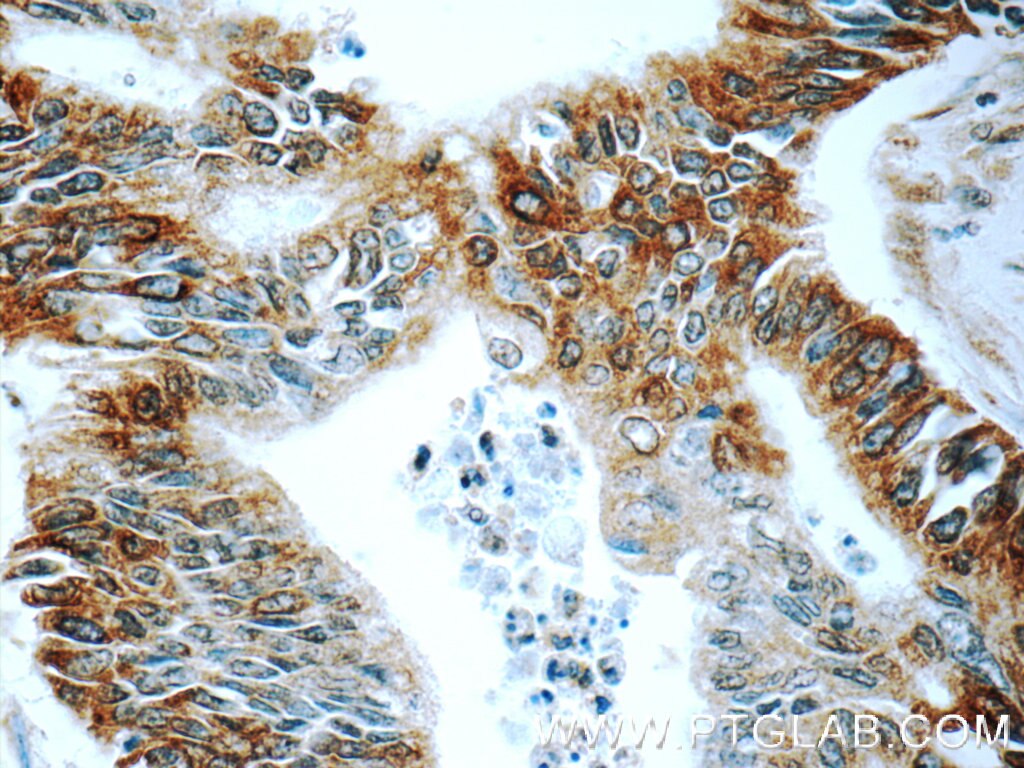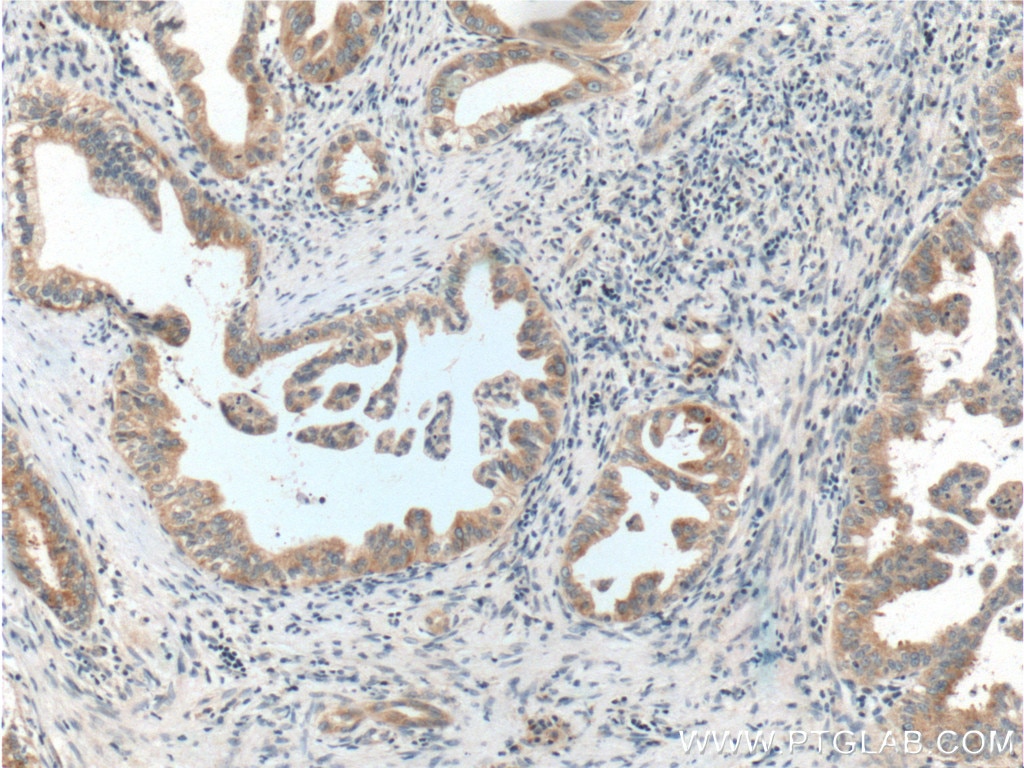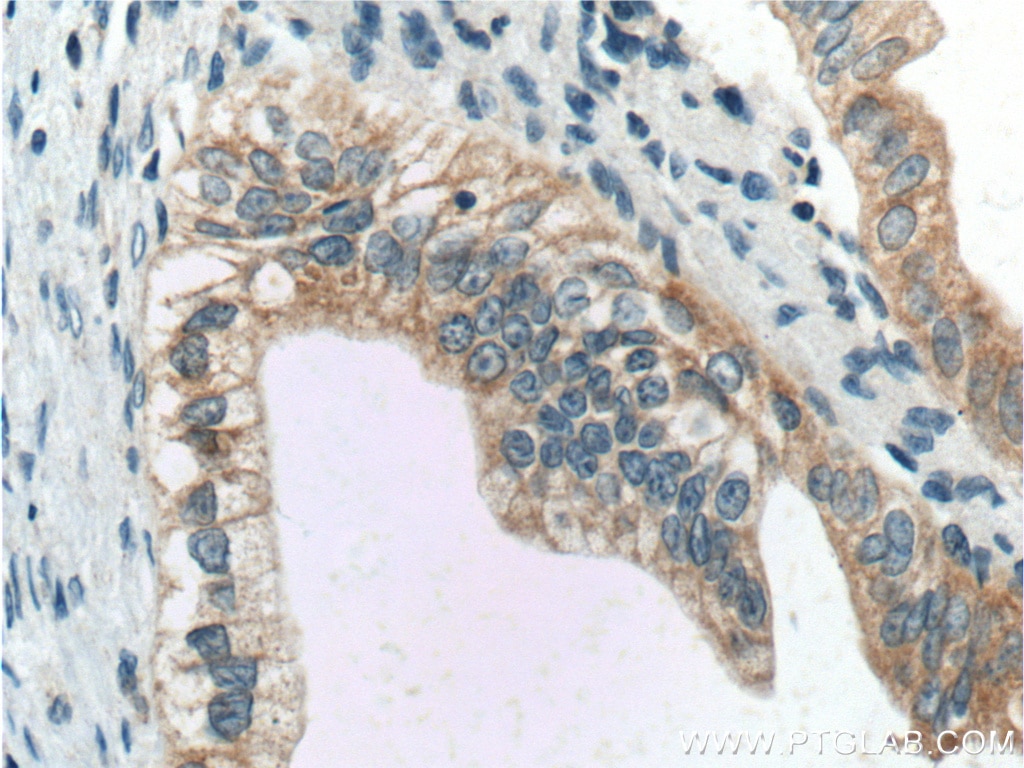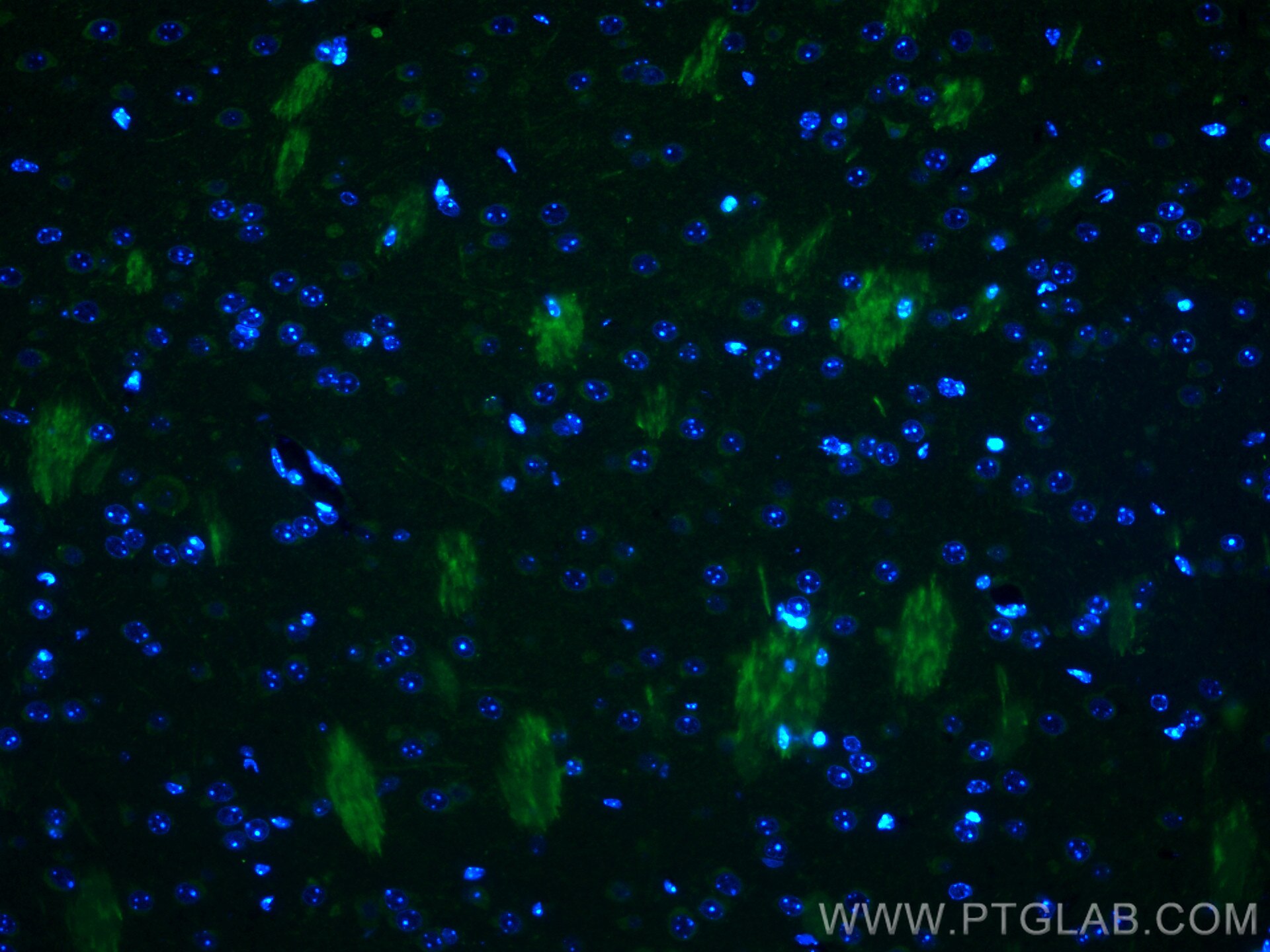- Phare
- Validé par KD/KO
Anticorps Polyclonal de lapin anti-BACE1
BACE1 Polyclonal Antibody for WB, IHC, IF-P, IP, ELISA
Hôte / Isotype
Lapin / IgG
Réactivité testée
Humain, poisson-zèbre, rat, souris
Applications
WB, IHC, IF-P, IP, ELISA
Conjugaison
Non conjugué
N° de cat : 12807-1-AP
Synonymes
Galerie de données de validation
Applications testées
| Résultats positifs en WB | tissu cérébral de souris, cellules HeLa, cellules PC-12, tissu cérébral de rat, tissu cérébral humain, tissu de poisson-zèbre, tissu pancréatique de souris |
| Résultats positifs en IP | tissu cérébral de souris |
| Résultats positifs en IHC | tissu cérébral de souris, tissu de cancer du pancréas humain il est suggéré de démasquer l'antigène avec un tampon de TE buffer pH 9.0; (*) À défaut, 'le démasquage de l'antigène peut être 'effectué avec un tampon citrate pH 6,0. |
| Résultats positifs en IF-P | tissu cérébral de souris, |
Dilution recommandée
| Application | Dilution |
|---|---|
| Western Blot (WB) | WB : 1:500-1:1000 |
| Immunoprécipitation (IP) | IP : 0.5-4.0 ug for 1.0-3.0 mg of total protein lysate |
| Immunohistochimie (IHC) | IHC : 1:100-1:400 |
| Immunofluorescence (IF)-P | IF-P : 1:50-1:500 |
| It is recommended that this reagent should be titrated in each testing system to obtain optimal results. | |
| Sample-dependent, check data in validation data gallery | |
Applications publiées
| KD/KO | See 2 publications below |
| WB | See 36 publications below |
| IHC | See 4 publications below |
| IF | See 3 publications below |
Informations sur le produit
12807-1-AP cible BACE1 dans les applications de WB, IHC, IF-P, IP, ELISA et montre une réactivité avec des échantillons Humain, poisson-zèbre, rat, souris
| Réactivité | Humain, poisson-zèbre, rat, souris |
| Réactivité citée | rat, Humain, souris |
| Hôte / Isotype | Lapin / IgG |
| Clonalité | Polyclonal |
| Type | Anticorps |
| Immunogène | BACE1 Protéine recombinante Ag3559 |
| Nom complet | beta-site APP-cleaving enzyme 1 |
| Masse moléculaire calculée | 501 aa, 56 kDa |
| Poids moléculaire observé | 70-75 kDa, 42-56 kDa |
| Numéro d’acquisition GenBank | BC036084 |
| Symbole du gène | BACE1 |
| Identification du gène (NCBI) | 23621 |
| Conjugaison | Non conjugué |
| Forme | Liquide |
| Méthode de purification | Purification par affinité contre l'antigène |
| Tampon de stockage | PBS with 0.02% sodium azide and 50% glycerol |
| Conditions de stockage | Stocker à -20°C. Stable pendant un an après l'expédition. L'aliquotage n'est pas nécessaire pour le stockage à -20oC Les 20ul contiennent 0,1% de BSA. |
Informations générales
beta-secretase, encoded by BACE1(beta-stie amyloid beta A4 precursor protein-cleavage enzyem1) gene, is a neuron-specific membrane-associated protease that participate in the two step proteolytic processing of the APP. Cleaves at the N-terminus of the A-beta peptide sequence, between residues 671 and 672 of APP, leads to the generation and extracellular release of beta-cleaved soluble APP, and a corresponding cell-associated C-terminal fragment which is later released by gamma-secretase. It has a high expression in the brain and pancreas. This protein has 6 isoforms produced by alternative splicing. BACE1 can be detected with different molecular weight: 42-56kD (prozymogen and isoforms), 65-75 (glycosylated forms) and 160kDa (dimer) (PMID:22741101; 21795680).
Protocole
| Product Specific Protocols | |
|---|---|
| WB protocol for BACE1 antibody 12807-1-AP | Download protocol |
| IHC protocol for BACE1 antibody 12807-1-AP | Download protocol |
| IF protocol for BACE1 antibody 12807-1-AP | Download protocol |
| IP protocol for BACE1 antibody 12807-1-AP | Download protocol |
| Standard Protocols | |
|---|---|
| Click here to view our Standard Protocols |
Publications
| Species | Application | Title |
|---|---|---|
Small Brain-Penetration and Neuron-Targeting DNA Nanoflowers Co-Delivering miR-124 and Rutin for Synergistic Therapy of Alzheimer's Disease. | ||
Redox Biol Hyperoside alleviates toxicity of β-amyloid via endoplasmic reticulum-mitochondrial calcium signal transduction cascade in APP/PS1 double transgenic Alzheimer's disease mice | ||
Redox Biol A potent phosphodiester Keap1-Nrf2 protein-protein interaction inhibitor as the efficient treatment of Alzheimer's disease | ||
Proc Natl Acad Sci U S A Aβ-induced Golgi fragmentation in Alzheimer's disease enhances Aβ production. | ||
Cell Rep CIP2A Causes Tau/APP Phosphorylation, Synaptopathy, and Memory Deficits in Alzheimer's Disease. | ||
Stem Cell Reports BACE1 Deficiency Causes Abnormal Neuronal Clustering in the Dentate Gyrus.
|
Avis
The reviews below have been submitted by verified Proteintech customers who received an incentive for providing their feedback.
FH Xiaoyu (Verified Customer) (02-07-2024) | Good signal.
 |
